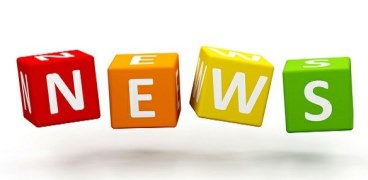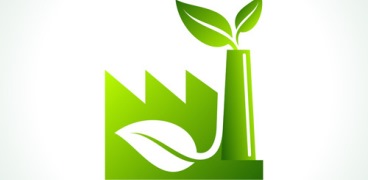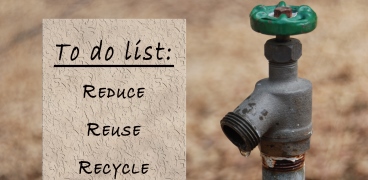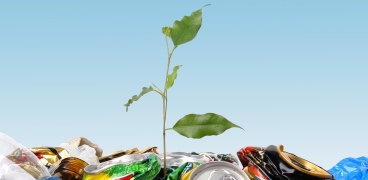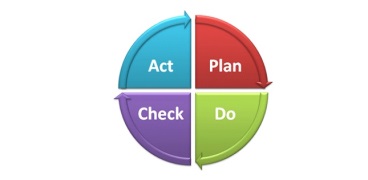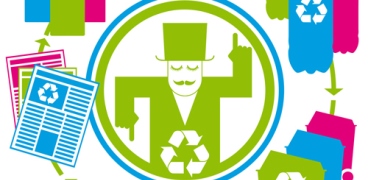Water Use Reduction
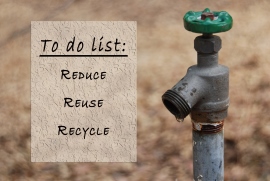
Water consumption is a major operating cost for many plastics companies as it needs to be paid for twice – once on purchase and once on disposal. There are a number of simple control measures and inexpensive devices that can reduce water costs by as much as 50%. Savings go straight to your bottom line as well as conserving an increasingly scare global resource.
The use of water for manufacturing and industry represents 11% of total demand in NZ and it is estimated that our total water usage currently equates to two to three times more water per person than in most other OECD countries. (Environment NZ report 2007).
How much does my water cost?
The cost of water varies from region to region In NZ. This includes the suppliers' operating and maintenance costs, water purchase and waste water disposal. Disposal costs for the effluent discharged to sewer will vary depending on the level of waste water treatment provided by the local sewerage utility.
For industry, there are additional operating costs for using and disposing of water.
On site water must be:
- Stored
- Treated
- Pumped around
- Heated and cooled
Alongside this, water storage and handling plant must be maintained and any loss through leakage and spillage may not only increase water costs, it may also waste valuable raw materials and products.
A reasonable estimate of the true cost of water is around three times the cost of purchase and disposal.
Where is water used?
In the plastics and chemical sector the biggest use of water is for cooling and steam production. Water is also one of the major raw materials used to make plastic products.
Other significant uses include plant and vessel washing, product washing, vacuum pumps and air pollution control. Water is used as a means of transferring material and energy around a processing facility and the loss of this down the drain can be a significant cost to business.
At many sites the common use of manual hoses to wash down equipment and surfaces is an invitation to use water indiscriminately.
Despite so many varied applications, water is often only metered as it comes onto site for billing purposes. Some plants meter process usage as this may be critical to product quality, and many sites are now aware of the need to meter steam usage for energy efficiency programmes, but cooling water flows are rarely measured.
Having a comprehensive metering system helps to locate leaks. Many plastics/chemical plants have developed over a period of years, and underground water mains are very common. Without a regularly updated distribution network diagram and clear metering to enable a full water balance to be constructed and reconciled with the water bill, leaks can go undetected for years. Underground leaks can also have much more serious impact, including possible erosion of foundations and roads and, if the leak becomes a serious burst pipe can result in production losses while the main is excavated and repaired.
What happens when I have finished with it?
Water is in fact the most common solvent used in industry and while this is extremely valuable to industrial processes, it also means that while clean water may come onto a site, it is generally dirty, material laden water that leaves site as trade waste. Most water used in the plastics/chemical industry is used once only. After use it is simply discharged to drain and either to sewer or an on-site treatment plant but it may be perfectly adequate for re-use in another process or as wash water before discharge.
A 'water cascade' can provide opportunities for several cycles of re-use before it becomes too dirty and must be discharged. Every time water is re-used, an equivalent volume of clean water does not have to be bought. By reusing water in the production process, water consumption can be cut by 50%, 70% or even 90% contributing to considerable cost savings.
How can I reduce my water usage?
Measure water use to establish baseline water usage against which to measure progress. This will show how and where water is being used and will highlight those areas which use the most water and indicate any undetected leaks.
Ensure that water use calculations include:
- Pumping costs
- Maintenance costs
- Treatment costs
- Whether the waste is hot water or cold water, and the costs of heating or cooling
- Costs of disposal of resultant waste water (i.e. trade waste charges)
Following this, a simple housekeeping programme can be instituted to generate immediate savings, raising staff awareness of the commercial importance of water savings and providing a fund for more capital-intensive measures.
Starting a leak detection programme
Without a leak detection programme there is no way of knowing whether you have water leaks, potentially costing your business considerable money.
Things to do and check:
- Monitor usage over time to detect any leaks. These will show up as rising consumption at times when it would not be expected.
- Leaks can arise from damaged pipeline connections, worn valves, flooded floats on water tanks and corroded pipe work
- Check water meters during down-time, eg shutdown or the end of a shift
- Consider the use of a systematic water minimisation programme
- Consider the inclusion of water minimisation issues within other training programmes
- Triggered hoses
Water reduction through improved cleaning procedures
Once the water balance has been completed, it is important to update it regularly so that the impact of any activities is transparent. This naturally leads on to setting targets for production and ancillary use with which progress can be monitored and savings verified.
Common capital investments to reduce water costs
Sooner or later, to reduce water consumption, capital investment will be required. Some of the most common measures taken by the plastics/chemical industry include:
- Condensate recovery and recycling as boiler feed water
- Condensate recovery and recycling as process water
- Replacement of once-through cooling water systems with recirculating systems
- Upgrades of liquid ring vacuum pumps to use recirculated water
- Recovery of filter wash water for process use
- Recovery of process water of plant washing
- Local effluent treatment facilities to recover high quality water
Why you should consider setting up an Environmental Management System
The measurement of water usage is essential to highlight trends, abnormalities, the potential for savings and the effect of water minimisation measures.
A number of water-saving measures and practices are common to all businesses. For example, it is good practice to keep drains for foul sewage, stormwater and process effluents separate, so that high sewage or trade effluent charges are not incurred for 'cleaner' water flows. Dry methods should be considered prior to those which use water, to minimise water use and effluent generation. When a hose is used to spray equipment or floors, care should be taken that large quantities of solid or soluble materials are not sent to drain if they can first be removed by sweeping or scraping. In staff toilets, the installation of percussion taps or automatic flushing devices for urinals could be considered.
If you have an Environmental Management System (EMS) at your site, water use and disposal might well be considered a significant impact from your process already. If you haven't already done so, consider options for reducing water use at your next management review. If you don't have an EMS, set yourself or your team a series of key milestones. Against each action, set a date and a responsibility for achieving the action.
Case Studies of Water Efficiency in the Plastics Industry
Useful Links
